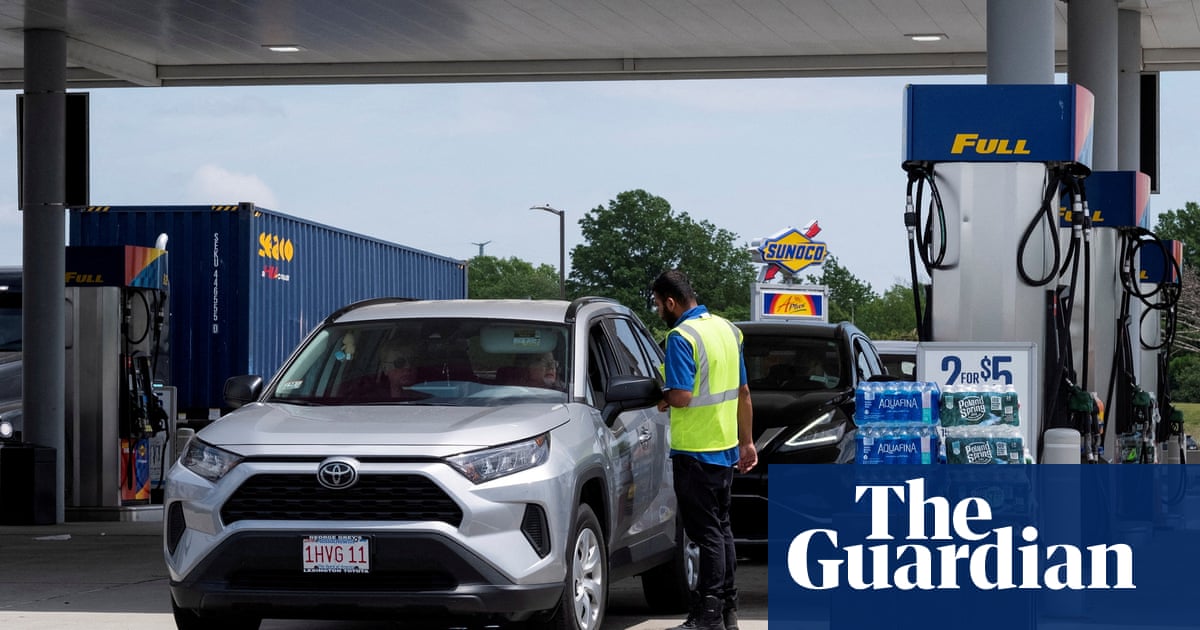US annual inflation rate dipped below 3% in July for the first time since 2021, a relief to investors who are expecting the Federal Reserve to cut interest rates next month as a sense of unease has settled over Wall Street after signs of a cooling labor market.
Prices rose at an annual rate of 2.9% in July while core inflation, which does not account for the volatile food and energy industries, climbed 3.2% over the previous 12 months and 0.2% since June.
The latest reading of the the Consumer Price Index (CPI), which tracks prices of consumer goods and services, comes as the political battle over the US economy is heating up. A recent poll showed the Democratic presidential candidate, Kamala Harris, had pulled ahead of her Republican rival, Donald Trump, on who voters trust with the economy. The poll was a marked shift from the many polls that have shown the former president ahead of Joe Biden on economic issues.
Paul Ashworth, chief North America economist at Capital Economics, said the details of the report were “a little disappointing” noting that rent prices, which have been a big driver of inflation, were higher in July than June.
But overall he said the report was “best described as mildly encouraging” and should support a quarter-point cut in interest rates when the Fed meet in September but, “at the same time, doesn’t suggest price pressures are collapsing in a way that could warrant a bigger 50bp [basis point] reduction”.
Though the recent report is unlikely to shake markets, uncertainty remains in Wall Street after last week’s sell-off sowed panic among investors.
Investors considered this report one of the main indicators for whether the Fed will start cutting interest rates next month. Interest rates have been at 5.25% to 5.5%, a two-decade high, for more than a year, and it is unclear whether the Fed can achieve a so-called “soft landing” – slowing price increases without inciting a recession.
For much of the last year, it seemed like the Fed had achieved a soft landing. The rate of inflation was slowly declining – it peaked at 9.1% in June 2022 – while the labor market held steady. When the Fed announced it would not change interest rates at the end of July, inflation in June was 3%, a 0.3% decrease from the month before, while unemployment was at 4.1%.
But any rosy outlook for a soft landing was diminished just over a week later, when July’s job figures were released, showing that hiring slowed to a level much lower than expected, and the unemployment rate rose to 4.3%, the highest since October 2021.
Markets quickly panicked, leading to a massive sell-off on 5 August that saw the S&P, Dow Jones and Nasdaq all down by 2.6% by the end of the day and increasing fears that the US economy was entering a recession.
Those fears turned out to be premature, at least for now. By Thursday, markets rallied after a weekly report showed a drop in jobless claims – a sign that there is still some strength in the labor market, despite Wall Street fears. The S&P 500 ended up rising 2.3% in one day, its biggest jump since November 2022.
Investors and economists are expecting the Fed will cut rates at its next meeting 18 September. Still, some Fed officials have indicated weariness that rates should be cut.
“Inflation is still uncomfortably above the committee’s 2% goal,” Michelle Bowman, a Fed governor, said in public remarks last week. “I will remain cautious in my approach to considering adjustments to the current stance of policy.”
For the Fed, it is essentially a balance between price increases and the job market. In a statement following its last minute, the Fed said it “is attentive to risks to both sides of its dual mandate”.
At the Fed’s last meeting, the chair, Jerome Powell, said officials are no longer laser-focused on inflation.
“We think we don’t need to be 100% focused on inflation because of the progress that we’ve made,” Powell said.

